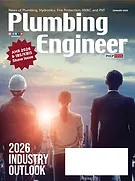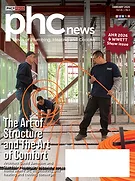During college, aspiring engineering students were required to dissect and show work for physics problems. The dissection usually consisted of stating the givens and known information, stating the assumptions, performing the calculation and reporting the results neatly enveloped in a box. Upon graduation and entry into the real engineering world, some of that process remains but eventually phases out with the discovery of office spreadsheets and overall concept understanding.
It is easy to input information into a spreadsheet and declare it complete; however, this does not always allow others to easily understand the calculation intent. There are many situations where calculations and design intent need to be understood: peer reviews, project sharing, owner questions or the transfer of project.
The content of a decipherable calculation and document should include a cover sheet, calculation/document and supplemental information. This format is not limited to calculations as diagrams and napkin sketches can benefit from being sandwiched between a coversheet and references.
High-Level Overview
The overall goal is to convey as much information as possible and as clearly as possible to an audience. Most of the time the audience is other engineers. However, situations may arise where the owner, governing agency or other trades may benefit from reviewing the calculation package.
The cover sheet plays an important role in the calculation package as this is the piece that explains what is to follow and provides a high-level overview of the results. At a minimum, it should include the project name, number, calculation type, calculation date, phase and status.
Engineers can generate several iterations of calculations throughout the life of the project; it is important to have each one documented so there is no confusion between the calculation from design development and construction documents. Following the identifying project information, a purpose statement may be included to answer the question of why this calculation was performed and then follow with the methodology.
The methodology is the best place to explain how to use and understand the calculation. It may require some referencing back to technical writing class to ensure the steps are clear and concise. At the end of the cover page, it is beneficial to provide the main results from the calculation. For example, include the incoming water service size, water supply fixture units and corresponding flow in gal./min. when providing a cover sheet for a building water supply calculation.
Explaining the Calculation
The cover sheet provides insight into the calculation; however, the calculation is the technical portion of which the design relies on. Sometimes the calculations are best performed by spreadsheet and other times by hand. Regardless of format, the calculation should follow the cover sheet and be as clear as possible. Keys to a good calculation include a graphical representation, color coding, comments (both hidden and visible) and formulas.
Graphical representation may not always be possible but when it is, it should be intuitive, giving a general understanding of how the input and calculated data work with the system. An example of incorporating graphical representation is a basic flow diagram for a booster pump system. The input data would be at points along the flow diagram, such as street pressure, meter and backflow loss, booster pump loss and elevation. This data can be connected to formulas documented in more detail.
Color coding helps to identify areas of interest in the calculation. A basic implementation of color coding is to color-code the cells where data should be input and where the cells are calculated, requiring no input. To go into more detail with color coding, use shades of a certain color to identify certain data schemes. Overall color coding should be added where necessary to get the proper information identified for the calculation.
Comments for the calculation can be both hidden and visible. Visible comments help to clarify areas of a calculation for the end user and reviewer, but hidden calculations should be used to guide the direct user of the calculation for how to properly input data, assumptions, type of data for the cell and supplementary information specific to the cell. Sometimes a hidden knock-knock joke or message is added to see if anyone is truly paying attention to the calculation.
Finally, formulas are necessary to maintain the integrity of the calculation for both the direct user and end user of the calculation. It may be obvious how the pump head is calculated to the person creating the calculation, but when used as a teaching tool and sharing with peer reviewers or other trades, this level of detail should be made immediately available so there is no confusion.
The formulas can be worked into the calculation formally with text, added as a visible note or reference supplemental information that follows the calculation.
Supplemental Information
Providing supplemental material at the end of the calculation package conveys all the information not found in the calculation. It is information to help further understand the calculation. Relaying as much information for as much clarity as possible can reduce the time spent by the reviewer attempting to understand where the results were derived.
Supplemental information may include flow diagrams showing options for worst-case scenarios, data tables with values for calculation inputs, and details and notes providing insight into the previous pages.
Typically, engineers use calculations as a tool. However, some effort early on can help to make the calculation more than a sizing apparatus or justification; it could become part of the project timeline. Over the course of the project — from schematic design to contract administration — the calculations at each stage can help understand how the project evolved.
Throughout the entire project, there may be other engineers who take over or are helping ease the timeline crunch. To aid in the clarity of the calculation package, it should include a cover sheet, the calculation and supplemental information applicable to that phase and calculation.
This is the post-college version of a neatly enveloped answer in a box.





